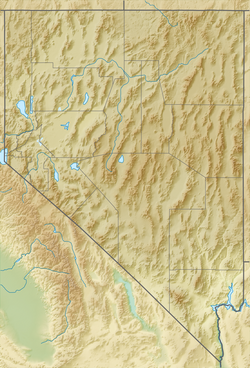| Candelaria Hills | |
|---|---|
| Highest point | |
| Peak | Miller Mountain |
| Elevation | 8,736 ft (2,663 m) NAVD 88 [2] |
| Listing | Mountain ranges of Nevada |
| Coordinates | 38°03′54.521″N118°11′29.155″W / 38.06514472°N 118.19143194°W [2] |
| Geography | |
| Country | United States |
| State | Nevada |
| County | Mineral County |
| Range coordinates | 38°10′57.74″N118°5′32.41″W / 38.1827056°N 118.0923361°W [1] |
| Borders on | |
| Topo map | USGS Candelaria |
The Candelaria Hills are a mountain range in Mineral County, Nevada. [1] The highest peak is Miller Mountain which was the location of "Borax" Smith's board-and-batten cabin where he lived when he discovered a rich borax deposit at nearby Teel's Marsh. [3]
